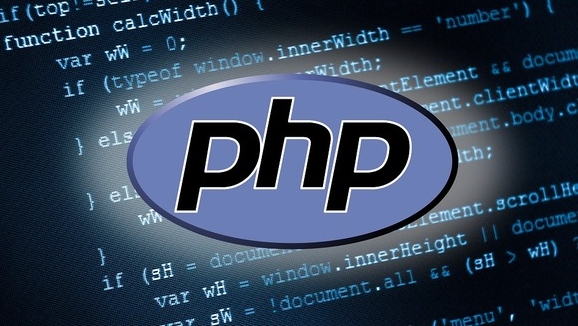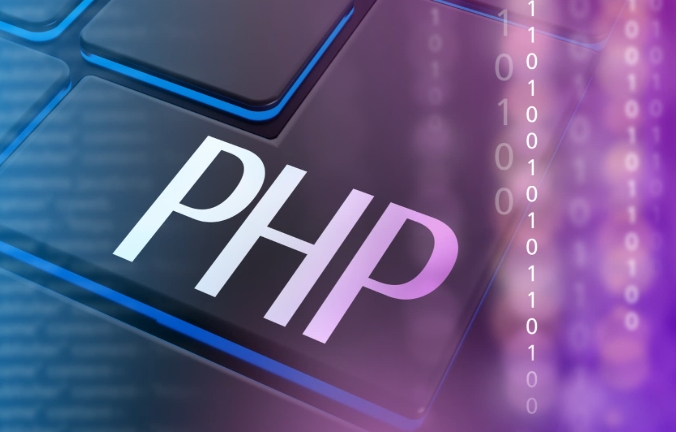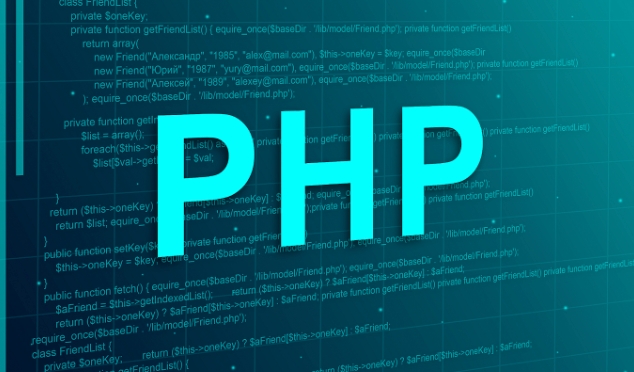 Backend Development
Backend Development
 PHP Tutorial
PHP Tutorial
 PHP Development environment optimization: Tips to improve performance
PHP Development environment optimization: Tips to improve performance
PHP Development environment optimization: Tips to improve performance
Jun 29, 2025 am 02:04 AMTo speed up a PHP development environment, optimize tools and configurations. 1) Use lightweight local servers like Laragon or Docker-based setups to reduce overhead. 2) Disable unused Apache/Nginx modules and use actively maintained PHP versions. 3) Adjust PHP settings such as disabling realpath_cache, enabling OPcache, and increasing memory limits. 4) Manage debugging tools like Xdebug efficiently by loading them only when needed. 5) Optimize Composer autoload to minimize file parsing on each request. These steps streamline performance with minimal effort.

If you're working with PHP and want your development environment to run faster, the key is in tuning both the tools and how they interact. A sluggish setup can kill productivity—slow page loads, delayed debugging, or bloated resource usage all add up. The good news is that with a few targeted changes, you can make your local PHP workflow feel much snappier.

Use a Lightweight Local Server Stack
Many developers start with full-blown setups like XAMPP or WAMP, but those often come with extra services running in the background that you might not need. If you’re only developing one or two projects, using something lighter like Laragon (Windows), MAMP (Mac), or even Docker-based environments tailored to your project can cut down on overhead.

- Disable unused modules in Apache or Nginx
- Stick to PHP versions that are actively maintained
- Use built-in PHP server for small tests (
php -S localhost:8000)
This helps reduce memory consumption and speeds up boot time, especially if you're switching between multiple projects often.
Optimize PHP Configuration for Development
The default php.ini isn’t always ideal for local development. Tweaking it can significantly improve performance without affecting functionality.

Some useful tweaks:
- Turn off
realpath_cache:realpath_cache_size=0(helps when files change often) - Enable an opcode cache like OPcache:
opcache.enable=1andopcache.enable_cli=1 - Set higher memory limits temporarily:
memory_limit=512M
These settings help reduce file parsing overhead and keep scripts running smoothly during active development.
Keep Debugging Tools Smart, Not Heavy
Tools like Xdebug are invaluable for stepping through code, but they also slow things down—sometimes dramatically. Many devs forget to toggle them off when they're not actively debugging.
Here’s what to do:
- Load Xdebug as a Zend extension only when needed
- Use conditional loading via environment variables or CLI flags
- Consider alternatives like PsySH for quick debugging without full profiling
A common trick is to have two PHP binaries: one with Xdebug enabled and another without. That way, you can switch easily depending on whether you're debugging or just testing general functionality.
Watch Out for Composer and Autoload Optimization
Composer's autoload system is convenient, but it can become a bottleneck if not managed well. Every time you request a PHP script, it has to load and parse a bunch of files.
To speed this up:
- Run
composer dump-autoload --optimizeregularly - Avoid excessive classmap generation unless necessary
- Don’t autoload dev dependencies in production-like environments
You’ll notice a difference especially in larger projects where hundreds of classes are autoloaded on each request.
Performance tuning for PHP development doesn’t require big overhauls. It’s more about making thoughtful choices in your setup and configuration. Most of these adjustments are simple and take just a few minutes to apply, but they can save you a lot of waiting time over the course of a day.
The above is the detailed content of PHP Development environment optimization: Tips to improve performance. For more information, please follow other related articles on the PHP Chinese website!

Hot AI Tools

Undress AI Tool
Undress images for free

Undresser.AI Undress
AI-powered app for creating realistic nude photos

AI Clothes Remover
Online AI tool for removing clothes from photos.

Clothoff.io
AI clothes remover

Video Face Swap
Swap faces in any video effortlessly with our completely free AI face swap tool!

Hot Article

Hot Tools

Notepad++7.3.1
Easy-to-use and free code editor

SublimeText3 Chinese version
Chinese version, very easy to use

Zend Studio 13.0.1
Powerful PHP integrated development environment

Dreamweaver CS6
Visual web development tools

SublimeText3 Mac version
God-level code editing software (SublimeText3)

Hot Topics
 What are some best practices for versioning a PHP-based API?
Jun 14, 2025 am 12:27 AM
What are some best practices for versioning a PHP-based API?
Jun 14, 2025 am 12:27 AM
ToversionaPHP-basedAPIeffectively,useURL-basedversioningforclarityandeaseofrouting,separateversionedcodetoavoidconflicts,deprecateoldversionswithclearcommunication,andconsidercustomheadersonlywhennecessary.StartbyplacingtheversionintheURL(e.g.,/api/v
 How do I implement authentication and authorization in PHP?
Jun 20, 2025 am 01:03 AM
How do I implement authentication and authorization in PHP?
Jun 20, 2025 am 01:03 AM
TosecurelyhandleauthenticationandauthorizationinPHP,followthesesteps:1.Alwayshashpasswordswithpassword_hash()andverifyusingpassword_verify(),usepreparedstatementstopreventSQLinjection,andstoreuserdatain$_SESSIONafterlogin.2.Implementrole-basedaccessc
 What are weak references (WeakMap) in PHP, and when might they be useful?
Jun 14, 2025 am 12:25 AM
What are weak references (WeakMap) in PHP, and when might they be useful?
Jun 14, 2025 am 12:25 AM
PHPdoesnothaveabuilt-inWeakMapbutoffersWeakReferenceforsimilarfunctionality.1.WeakReferenceallowsholdingreferenceswithoutpreventinggarbagecollection.2.Itisusefulforcaching,eventlisteners,andmetadatawithoutaffectingobjectlifecycles.3.YoucansimulateaWe
 What are the differences between procedural and object-oriented programming paradigms in PHP?
Jun 14, 2025 am 12:25 AM
What are the differences between procedural and object-oriented programming paradigms in PHP?
Jun 14, 2025 am 12:25 AM
Proceduralandobject-orientedprogramming(OOP)inPHPdiffersignificantlyinstructure,reusability,anddatahandling.1.Proceduralprogrammingusesfunctionsorganizedsequentially,suitableforsmallscripts.2.OOPorganizescodeintoclassesandobjects,modelingreal-worlden
 How can you handle file uploads securely in PHP?
Jun 19, 2025 am 01:05 AM
How can you handle file uploads securely in PHP?
Jun 19, 2025 am 01:05 AM
To safely handle file uploads in PHP, the core is to verify file types, rename files, and restrict permissions. 1. Use finfo_file() to check the real MIME type, and only specific types such as image/jpeg are allowed; 2. Use uniqid() to generate random file names and store them in non-Web root directory; 3. Limit file size through php.ini and HTML forms, and set directory permissions to 0755; 4. Use ClamAV to scan malware to enhance security. These steps effectively prevent security vulnerabilities and ensure that the file upload process is safe and reliable.
 What are the differences between == (loose comparison) and === (strict comparison) in PHP?
Jun 19, 2025 am 01:07 AM
What are the differences between == (loose comparison) and === (strict comparison) in PHP?
Jun 19, 2025 am 01:07 AM
In PHP, the main difference between == and == is the strictness of type checking. ==Type conversion will be performed before comparison, for example, 5=="5" returns true, and ===Request that the value and type are the same before true will be returned, for example, 5==="5" returns false. In usage scenarios, === is more secure and should be used first, and == is only used when type conversion is required.
 How can you interact with NoSQL databases (e.g., MongoDB, Redis) from PHP?
Jun 19, 2025 am 01:07 AM
How can you interact with NoSQL databases (e.g., MongoDB, Redis) from PHP?
Jun 19, 2025 am 01:07 AM
Yes, PHP can interact with NoSQL databases like MongoDB and Redis through specific extensions or libraries. First, use the MongoDBPHP driver (installed through PECL or Composer) to create client instances and operate databases and collections, supporting insertion, query, aggregation and other operations; second, use the Predis library or phpredis extension to connect to Redis, perform key-value settings and acquisitions, and recommend phpredis for high-performance scenarios, while Predis is convenient for rapid deployment; both are suitable for production environments and are well-documented.
 How do I perform arithmetic operations in PHP ( , -, *, /, %)?
Jun 19, 2025 pm 05:13 PM
How do I perform arithmetic operations in PHP ( , -, *, /, %)?
Jun 19, 2025 pm 05:13 PM
The methods of using basic mathematical operations in PHP are as follows: 1. Addition signs support integers and floating-point numbers, and can also be used for variables. String numbers will be automatically converted but not recommended to dependencies; 2. Subtraction signs use - signs, variables are the same, and type conversion is also applicable; 3. Multiplication signs use * signs, which are suitable for numbers and similar strings; 4. Division uses / signs, which need to avoid dividing by zero, and note that the result may be floating-point numbers; 5. Taking the modulus signs can be used to judge odd and even numbers, and when processing negative numbers, the remainder signs are consistent with the dividend. The key to using these operators correctly is to ensure that the data types are clear and the boundary situation is handled well.





